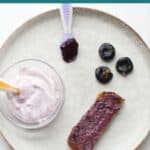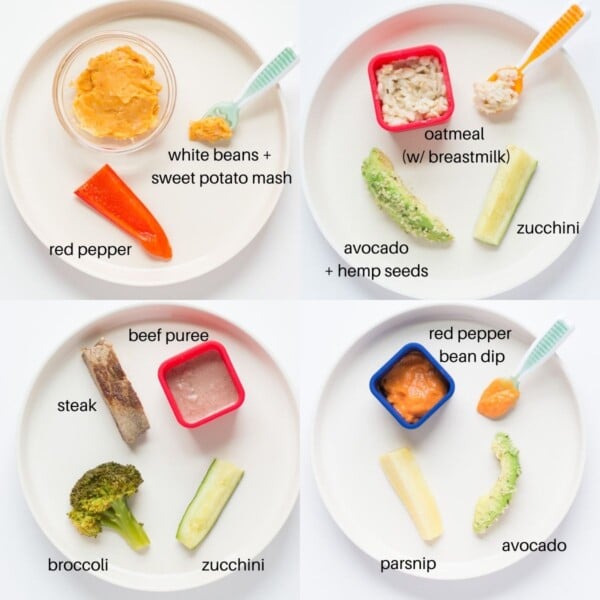This post may contain affiliate links. Please see our disclosure policy for more details.
Here’s everything you need to know when it comes to serving blueberries to your baby, including when and how to introduce them safely as well as healthy recipes that are suitable for 6 months and up.
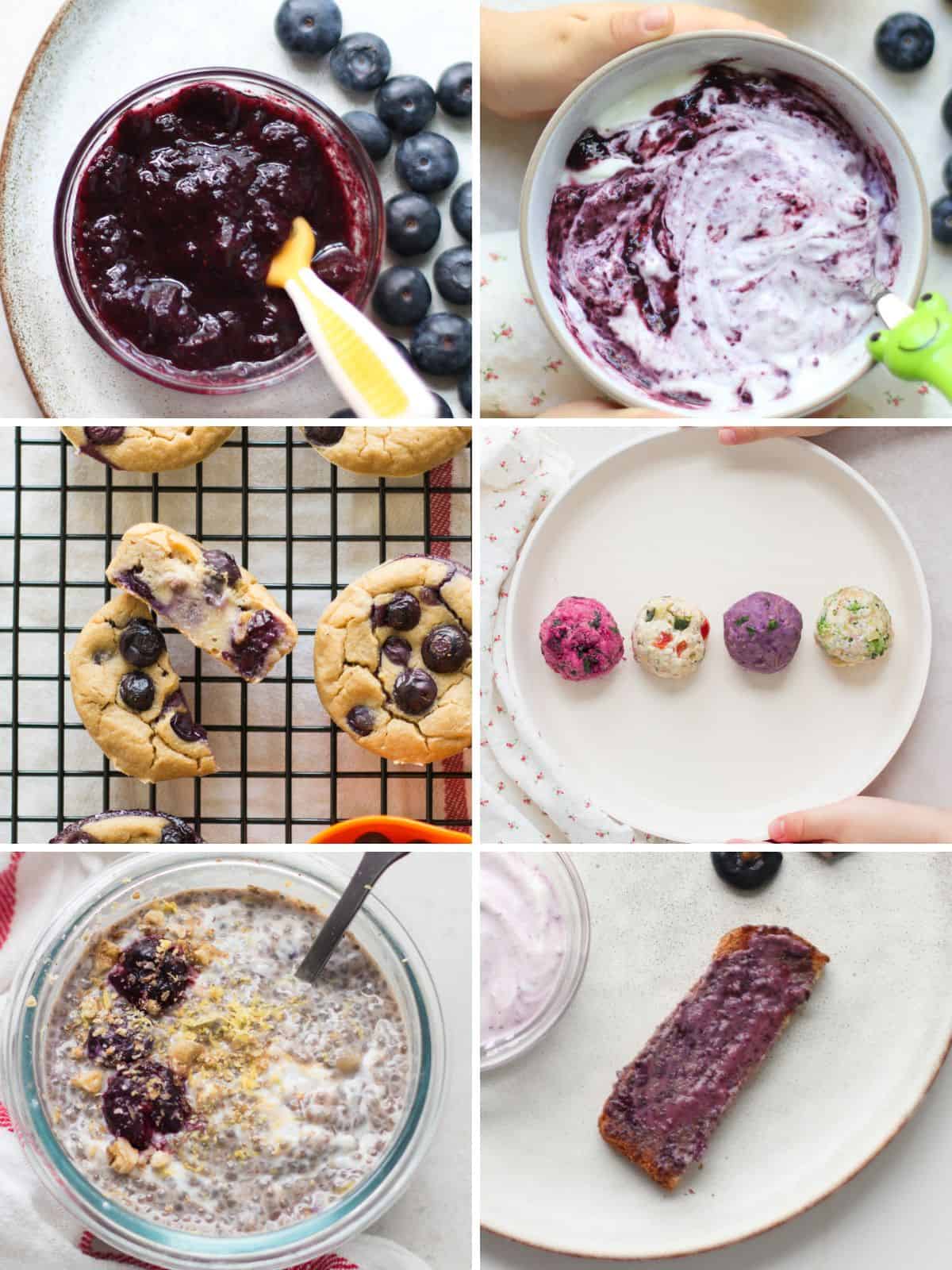
Table of Contents
- When can babies eat Blueberries?
- Is your baby 6 months old and up?
- Health Benefits
- Are Blueberries safe for babies?
- Selecting the best blueberries
- Organic Vs. Conventional Blueberries
- Blueberry Puree
- How to Serve Blueberries for Baby Led Weaning
- Blueberry Recipes for Babies
- Frequently Asked Questions
- Blueberry Puree for Babies Recipe
When can babies eat Blueberries?
Blueberries can be introduced to babies as soon as they’re ready to start solids, usually around 6 months.
It’s important to remember that your baby is unique and that rather than going by the calendar, you need to make sure your baby is DEVELOPMENTALLY ready to start solids.
If you’re unsure, be sure to grab this FREE handout!

Is your baby 6 months old and up?
Learn all the secrets to starting solids safely while optimizing nutrition!
Health Benefits
Blueberries are a good source of vitamins and minerals, including manganese and vitamin K, which are important for bone development and wound healing, and vitamin C, which helps boost the immune system and enhance the absorption of plant-based iron.
Their high fiber content can help with digestion and reduce the risk of constipation.
And just like strawberries, blueberries contain a variety of antioxidants, such as anthocyanins (also found in cabbage), which have been shown to improve cognitive function and memory in both children and adults.
Are Blueberries safe for babies?
While blueberries can be introduced as one of your baby’s first foods, it is a choking hazard for babies due to its small size, roundness, and firmness.
Therefore, it’s extremely important to make sure they’re prepared and served in an age-appropriate way to minimize the risk of choking.
Let me show you how! blueberries are also not a common allergen.
Selecting the best blueberries
Here are the top tips to help you select the most delicious blueberries:
- Look for plump berries that are firm to the touch. Avoid those that are mushy, discolored, or have any signs of mold or spoilage.
- Look for deep blue color.
- Choose locally grown, in-season strawberries as they are often fresher with better flavor.
Organic Vs. Conventional Blueberries
Blueberries are on the top list of fruits with highest pesticide residues so it’s best to purchase organic, IF possible.
I emphasize IF because organic blueberries can be quite expensive, and I don’t want the cost to be a deterring factor.
The health benefits of eating any fruits and vegetables outweigh the potential pesticide risk.
Refer to the FAQ section below for tips on how to wash fresh blueberries to remove as much surface pesticide residues as possible.
Blueberry Puree
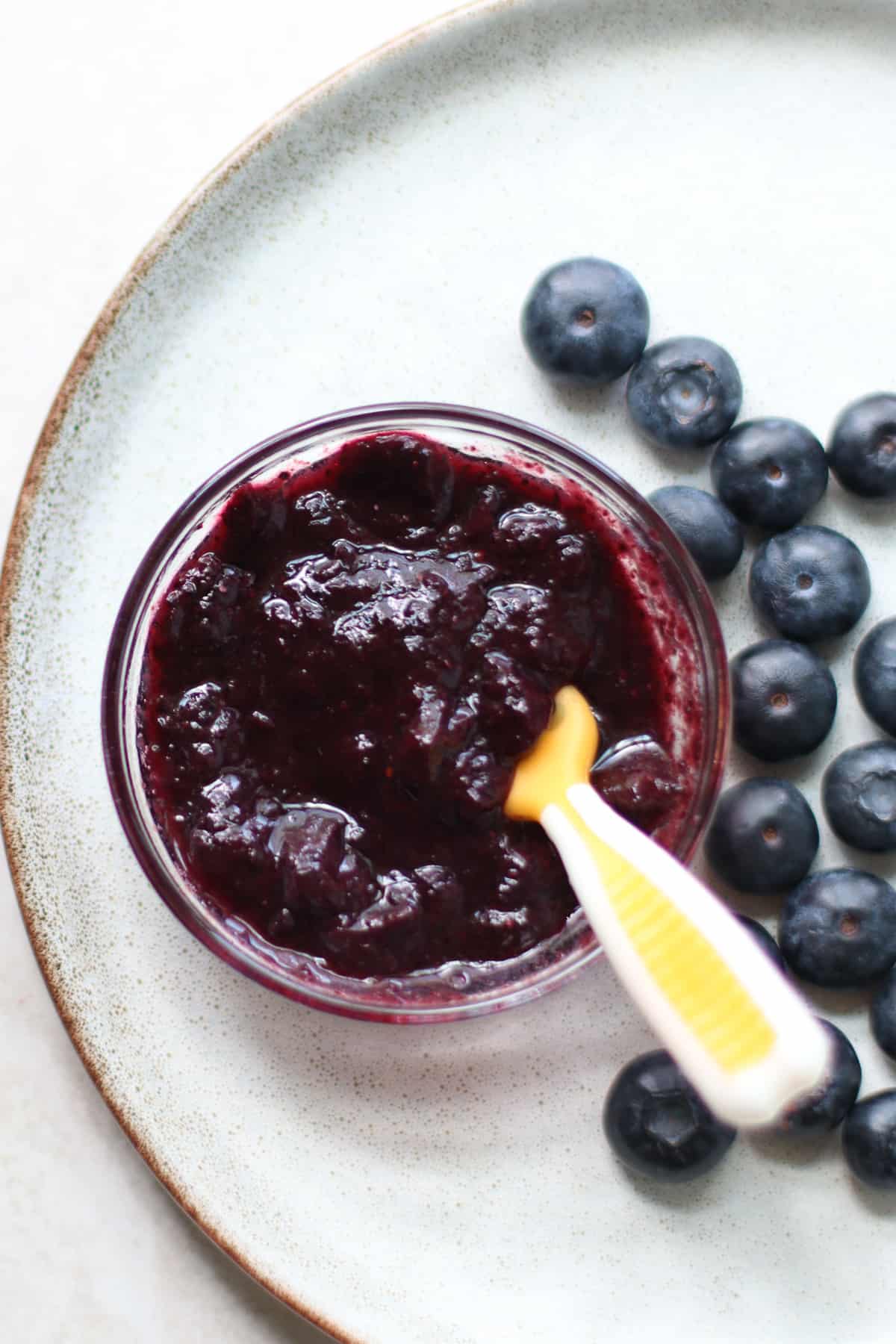
It truly is so simple to make! All you need are ripe fresh or frozen blueberries that have been thawed. I recommend using fresh when in season for best flavor.
The full recipe can be found in the recipe card at the bottom of the post.
Blueberry Puree combinations
You can serve blueberry puree by itself or mix in other foods such as:
How to Serve Blueberries for Baby Led Weaning
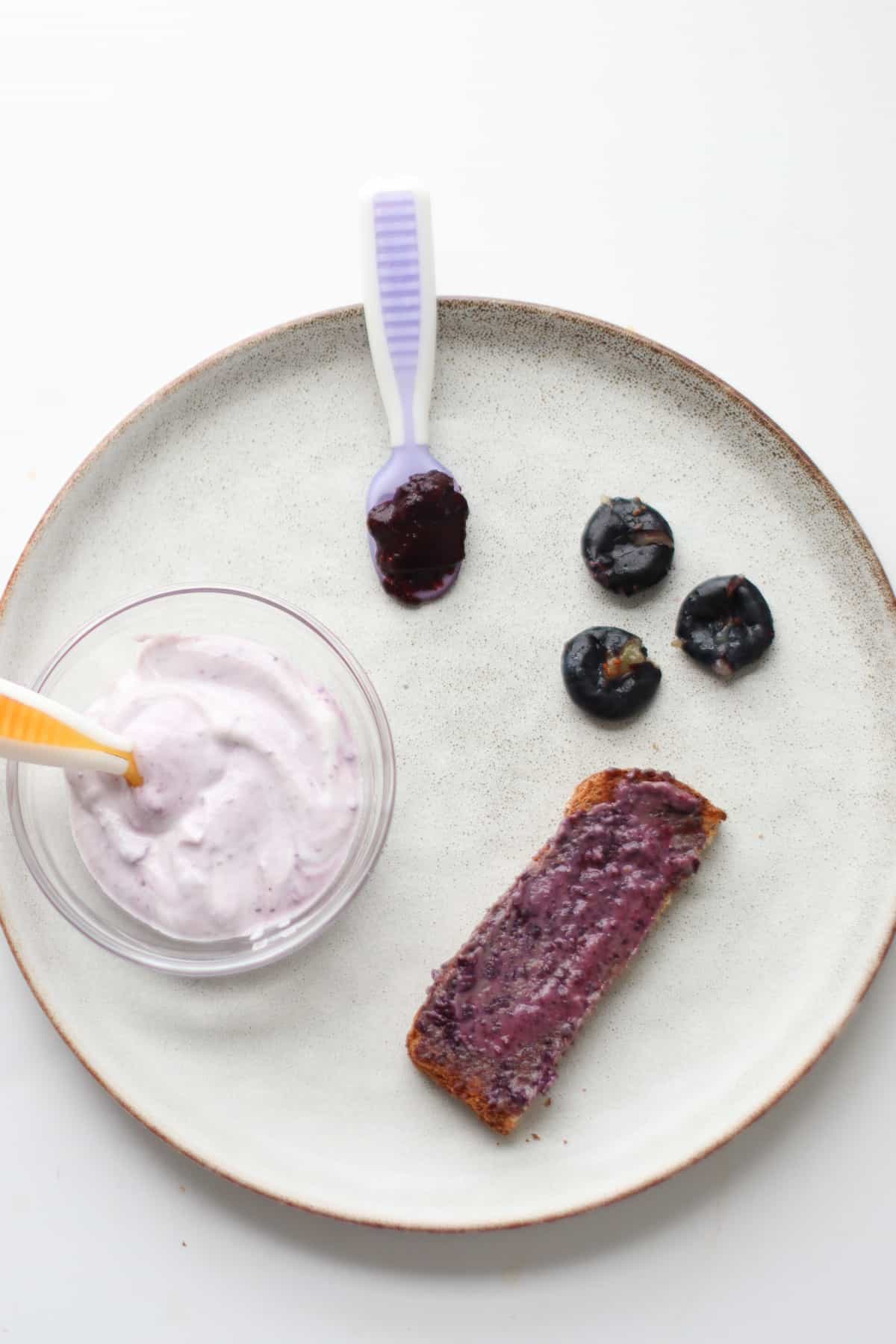
The Ultimate Guide to Baby Led Weaning
6+ Months
Blueberry Puree
There is a common misconception that you can’t serve purees when doing baby led weaning, and that’s simply not true!
Preload onto a spoon (this one is a must!) and place on the table or directly in their hand. You can start with the smooth texture and move to the chunky texture by 9 months at the latest.
Fold into foods
Stir in puree or mashed cooked blueberries to any of the foods mentioned above.
I love adding to yogurt, oatmeal (try shaping into little fingers), or combining the puree with some peanut butter and spreading onto toast.
Endless possibilities!
Whole Blueberries
Bigger is better and safer at this age. Not only will it minimize the risk of choking but it will be easier for babies to grab.
So choose a large blueberry and also flatten into discs by holding it between your thumb and index finger and gently pressing down.
Note that your baby will have a difficult time holding it, so you can help get it into their hands but don’t place directly in their mouth as that can increase the choking risk.
9+ Months
Continue flattening blueberries into discs. Your baby will have a much easier time grabbing them with their pincer grasp.
12+ Months
Whole blueberries are considered a choking hazard until 4 years of age. However, just like with any food, assess your child’s oral motor development and chewing skills. If you think they are ready, offer whole blueberries one at a time, making sure they are sitting down and not distracted.
I gave my son a whole blueberry around 14 months and he did great with them. But I continued to flatten when packing for preschool because I couldn’t be with him and there were more distractions for him there.
Blueberry Recipes for Babies
Here are some easy, healthy, and delicious ways to incorporate blueberries into your baby’s meals. Note that cooked whole blueberries are not a choking hazard as they will be super soft.
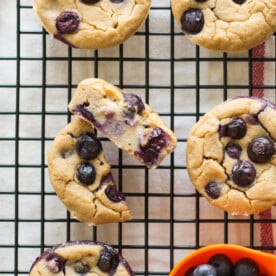
Healthy Blueberry Muffins for Babies

Blueberry Yogurt

Eggless Blueberry Muffins
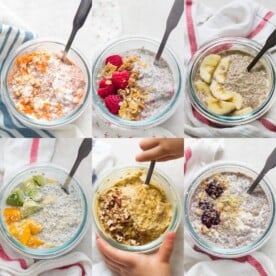
Single Serve Chia Puddings for Babies and Kids
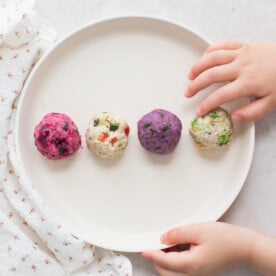
Homemade Baby Oatmeal

Banana Oatmeal Bars

Blueberry banana cake

How to Cook Steel Cut Oats (4 Ways)
Frequently Asked Questions
Both types are great! Nothing beats fresh, in-season juicy blueberries. However, frozen blueberries are just as nutritious as fresh, if not more as they are picked at the peak of ripeness and frozen immediately, which helps to preserve their nutritional content.
They are so convenient to have on hand all year round too!
Here are some ways to keep your blueberries fresh for longer. It is best to wash them berries just before serving them to prevent the berries. However, if you want to wash in advance for easy snacking, like I do, here are some tips.
Transfer the blueberries to a large bowl with one part white vinegar and 3 parts water. Gently stir to coat in vinegar solution and allow to soak for 5-10 minutes. Drain and rinse thoroughly to remove any vinegar taste. Pat dry and transfer to a container lined with paper towel.
Did you make this recipe? Leave a rating below and let me know how you liked the recipe! Your feedback means so much to me!

Blueberry Puree for Babies
Equipment
Ingredients
- 1 cup fresh or frozen blueberries
Optional
- 2 teaspoons lemon juice
- 1 teaspoon lemon zest
- 1/2 teaspoon vanilla extract
Instructions
- Rinse well and pat dry. Add to a food processor or blender. Blend until smooth. Depending on how juicy your blueberries are, you many need to add a little bit of water, breastmilk, or formula.
- Serve as is or stir into various foods, like oatmeal, yogurt, or combine with peanut butter and spread onto toast.

